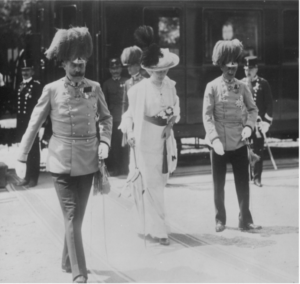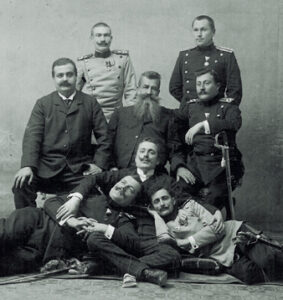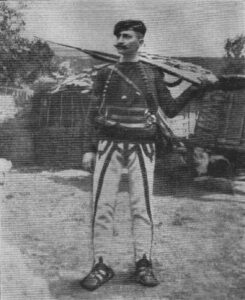
A Fiction About a Fact

Historical fiction can be the a fantastic way to ingrain history events as long as it doesn’t deviate too far from the dry and dusty demands of factual “truthiness”, and in the vein The Second Seal by Dennis Wheatley is an excellent primer for the dabbler who wants to get started in the area World War I and the Archduke’s assassination in Sarajevo.
Originally published in 1950, hard copies are out of print and hard to come by, but it is available online in both the Kindle Store and Apple books. One of a series of books about the fictional Duke de Richleau, the book combines the fictional, a spy mission that didn’t happen but could have as well as a romance with a non-existent Habsbug Princess; and the factual, the build up to World War I and the assassination of Franz Ferdinand and Sophie in Sarajevo. And, for all that there are liberties taken in the name of a good story, the general outline of real history and a very good explanation of why the events occurred the way they did is woven into the fiction.

In the beginning, the Duke is pulled aside by the fictional Sir Pellinore Gwaine-Cust and a thinly disguised (Mr. Marlborough? REALLY? Not entirely hard to figure out) Winston Churchill for to arrange for a spy mission to Belgrade to figure out what the Serbian Government, and the secret organization of The Black Hand, are up to. Sir Pellinonore and Mr. Marlborough are convinced that the world is headed for a war, and they want Britain to be ready.
The conversation laying out the parameters of the spy mission are a gold-mine of information about how the world got to where it was in April of 1914. The men discuss the assassination of King Aleksander of Serbia and Queen Draga and the Black Hand’s participation. And then they move on to Serbia’s motivations.
Serbia’s dearest ambition was to have free access to the Adriatic. She fought a costly campaign to that end, and with the capture of Scutari won a good port for the direct shipment of Serbian products overseas. But she was not allowed to keep it, or the great hinterland that thousands of her soldiers had died to free from Turkish rule, — Sir Pellinore.
And, later, discussing where a war might break out, the Duke interjects, “I regard it as much more probable that they will instigate fresh trouble in Bosnia…a high percentage of the inhabitants of that province are of Serbian blood, and the arbitrary manner in which Austria acquired it aroused great resentment among other powers.”

The Duke then goes on to Vienna on his way to Belgrade and finds a way to meet furtively with the Habsburg Archduchess Ilona Theresa, a thinly disguised Archduchess Elisabeth Marie. By 1914, the real Archduchess was married and not stricken with tuberculosis, but her fictional counterpart serves to exhibit the nasty behavior that the Imperial Family exhibited toward the Duchess Sophie of Hohenberg, Franz Ferdinand’s wife. In the story Ilona refers to Sophie in the dismissive sneer usually used as an epithet by Austrian nobles as “The Chotek”.
In Belgrade, the Duke encounters all the main players of The Black Hand, where he is conveniently inducted into their secret society (and it is a correct-ish representation of their rituals) and has long conversations about their motivations. It culminates in a fight scene (whose outcome is a foregone conclusion as it happens only halfway through the book) where the Duke manages to escape and race toward Sarajevo to stop the assassination.
And we all know how that ended.
Although the fate of Dragutin Dimitrijević (whose name Sir Pellinore and Mr. Marlborough are completely unable to pronounce) is unclear in the book, in history he was sentenced to death after World War I and executed.
Vojislav Tankosić meets a different end in the book than in real life. In actuality he died during the Serbian Army’s retreat in 1915 and was buried secretly before the Austrians exhumed him and photographed his body to publicly prove that he was dead.

The book is chock full of adventure, of course, as Dennis Wheatley‘s series of novels were one of the inspirational bases for the later 007 series. It makes sense to compare the two, because Wheatley was also involved in World War I and II, and in World War II was a part of creating and coordinating military deception and cover plans.
As his grandson Dominic later wrote about the appeal of Wheatley’s novels, “…his legions of readers who were in that middle ground of fiction, not looking for pure fantasy, nor dry fact, but something exciting, extraordinary, possible, and even probable.”
In The Second Seal, Wheatley’s readers definitely got what they were looking for.
For more book reviews, please click here.
For more on World War I, please click here.

